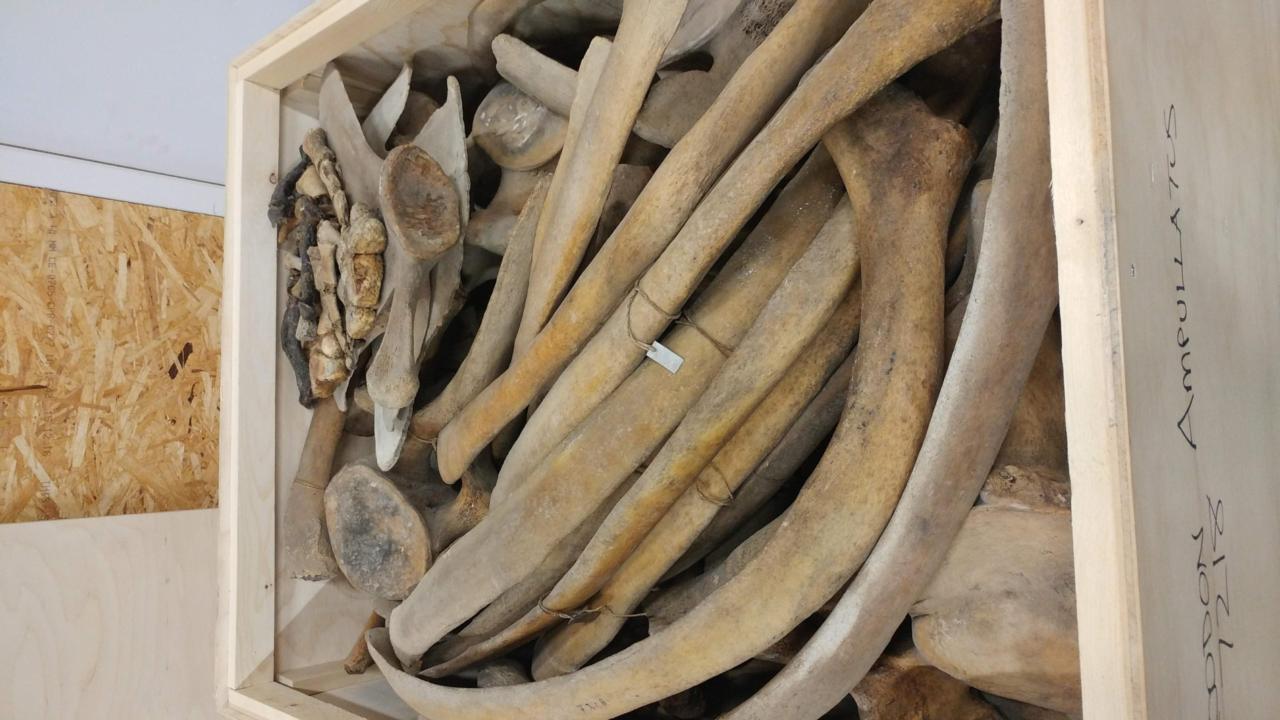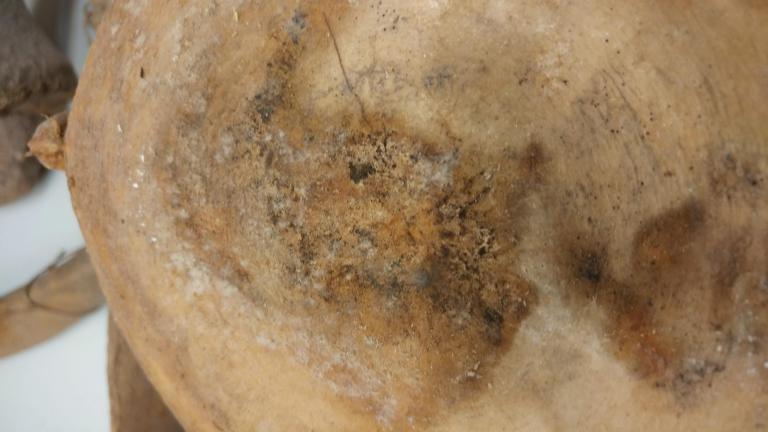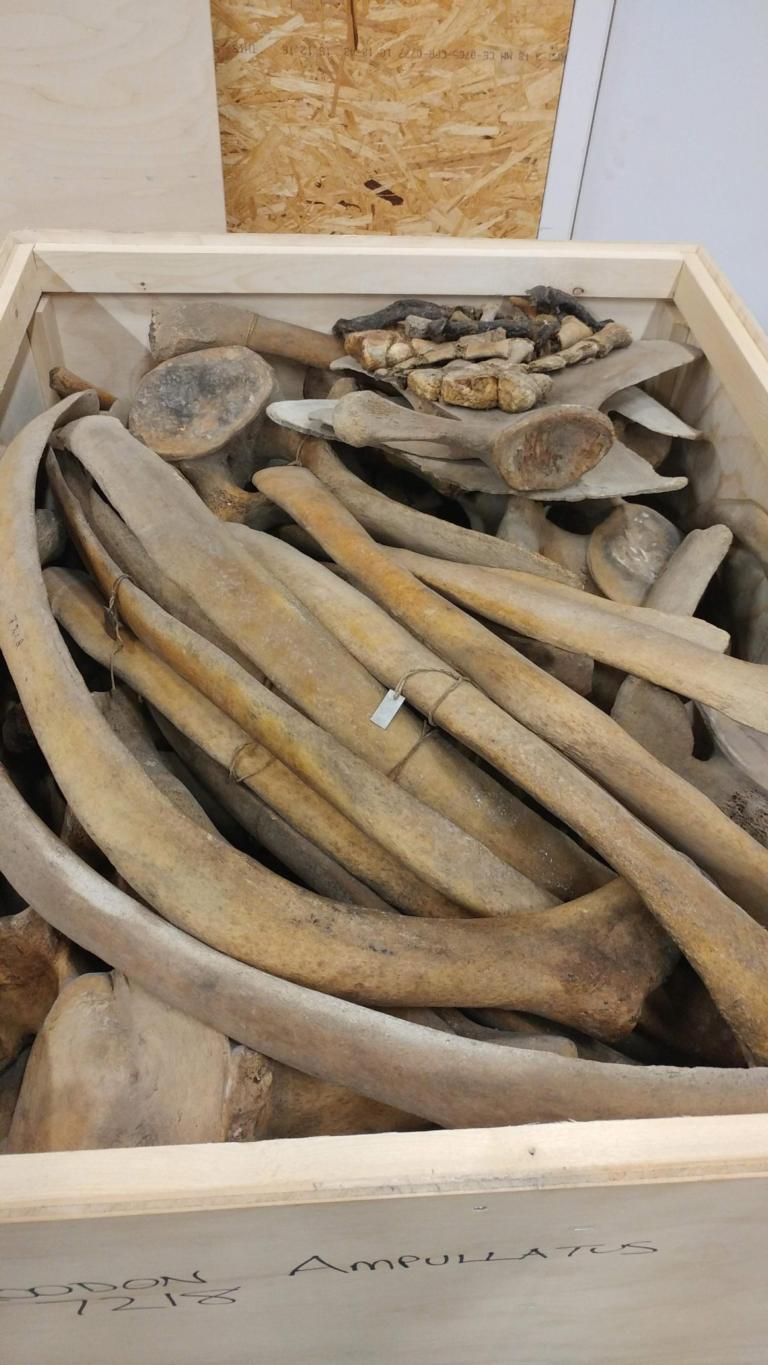
Recently we worked on a rare specimen, a male Northern bottlenose whale, Hyperoodon ampullatus. This specimen is from October 1946 and was found on the island of Terschelling. Bottlenose whales are rare in our collection because they do not occur in the North Sea, preferring cold and deep Northern Atlantic Waters. They dive more than 1400 meters to hunt for squid and bottom dwelling fish and invertebrates. These foraging dives can last more than one hour! Bottlenose whales are small, less than 10m, and quite social, often occurring in groups between 4 and 20 individuals. They are very curious and frequently come close to investigate ships, which made them an easy target during whale hunting days. When a whale was killed, often other members of the pod would stay with the body which made them easy to catch.
The bottlenose we were working on was not hunted but washed up dead on the beach. The bones were dusty, which we expected, but they also had mold, which was an unpleasant surprise. Mold can be very dangerous to breath in due to the spores it produces and therefore must be treated carefully. In this case, we brought all the affected bones under the fume hood and gave them a wipedown with ethanol, which kills mold. After the bones dried we proceeded with normal cleaning, which in this case was vacuuming and washing with a damp rag.
A Northern bottlenose whale
by Archibald Thorburn 1920-21, from the Field Museum of Natural History Library CC BY 3.0

I have to admit that I was surprised to see mold because these bones seemed to be in good shape. After handling so many whale bones usually I can tell just by the weight how greasy they will be. Light weight bones don’t have a lot of fat in them where as heavy bones do. Usually these low fat bones are easily cleaned with a vacuum, whereas of course greasy bones require a lot more work. Mold is usually a characteristic of fatty bones, which these clearly were not. So it is a mystery as to how the mold came to be. Perhaps at some point the Bottlenose Whale stored in an area of the depot that had low air flow, or maybe next to a specimen with mold and the spores wafted over to this one. We will keep an eye on it to make sure it doesn’t reoccur.
Dusty ribs and moldy bones.
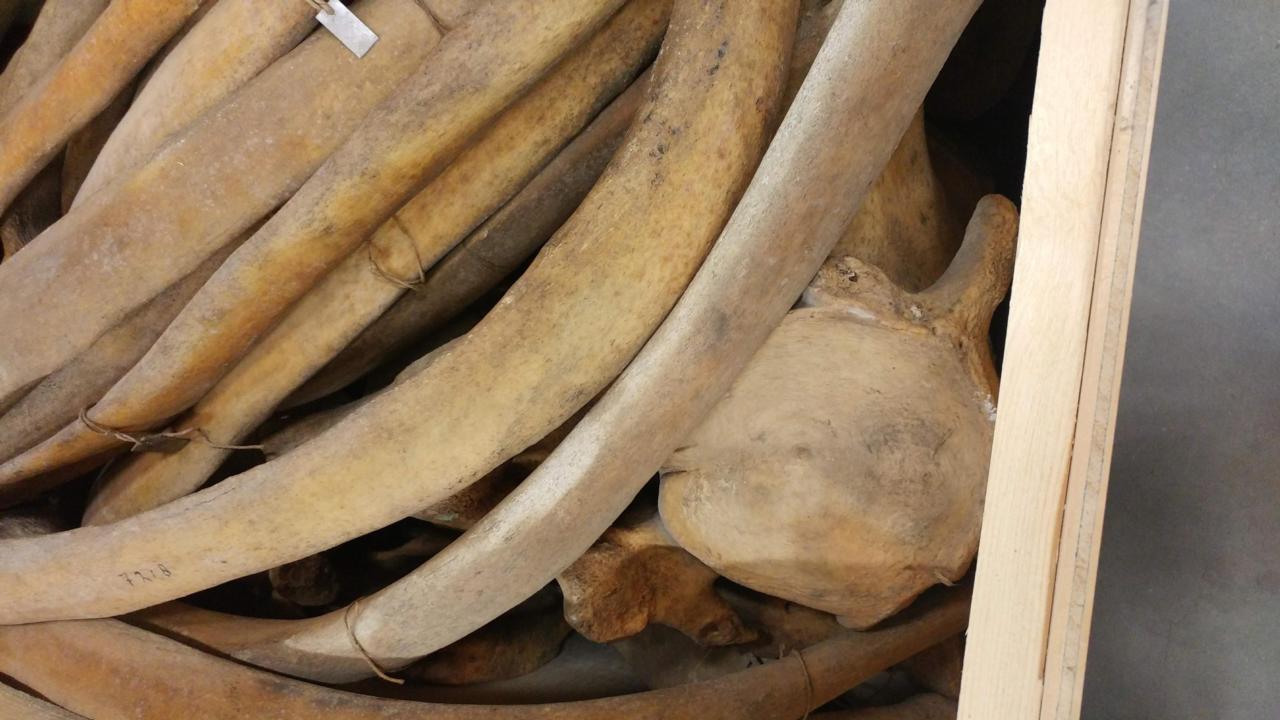
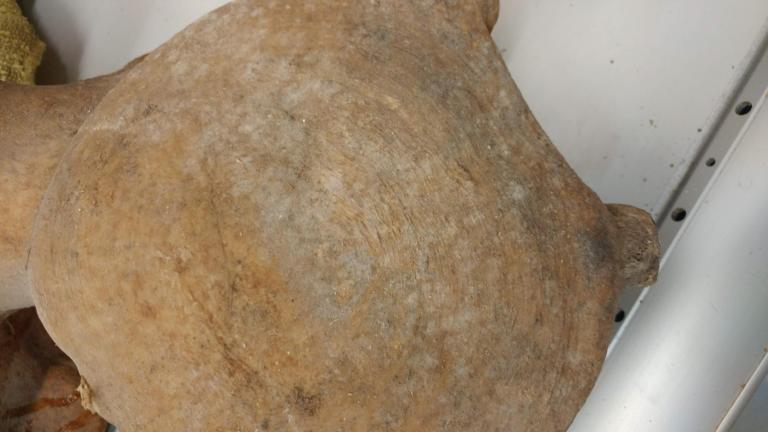
So which is better to have in the collection? Heavy greasy bones or lightweight “clean” ones? Well, the answer lies in the middle. Light weight bones are not necessarily better to have in the collection than having very/ fatty bones. Bones with no fat can be extremely friable: some skeletons we have cleaned arens so fragile that the ribs can no longer be wired together because they are crumbling around where the wires are. However, fatty bones are a mess. I think it is key in the initial preparation of the animal to have most fat removed but not ALL of it. How this is accomplished is unclear, because it is not known how most of the cetacea in our collection were prepared, whether it was macerating in water, buried in the ground, or some other method, so we cannot compare the prep method for “good” skeletons with bad/fatty/greasy. I am not even sure that the preparator doing the work would realize how much fat was left in the bones for some time.
There is a quote attributed to Einstein that says:
“If we knew what we were looking for we would not call it reSEARCH.”
I think this applies in the case of how best to preserve whale skeletons.
